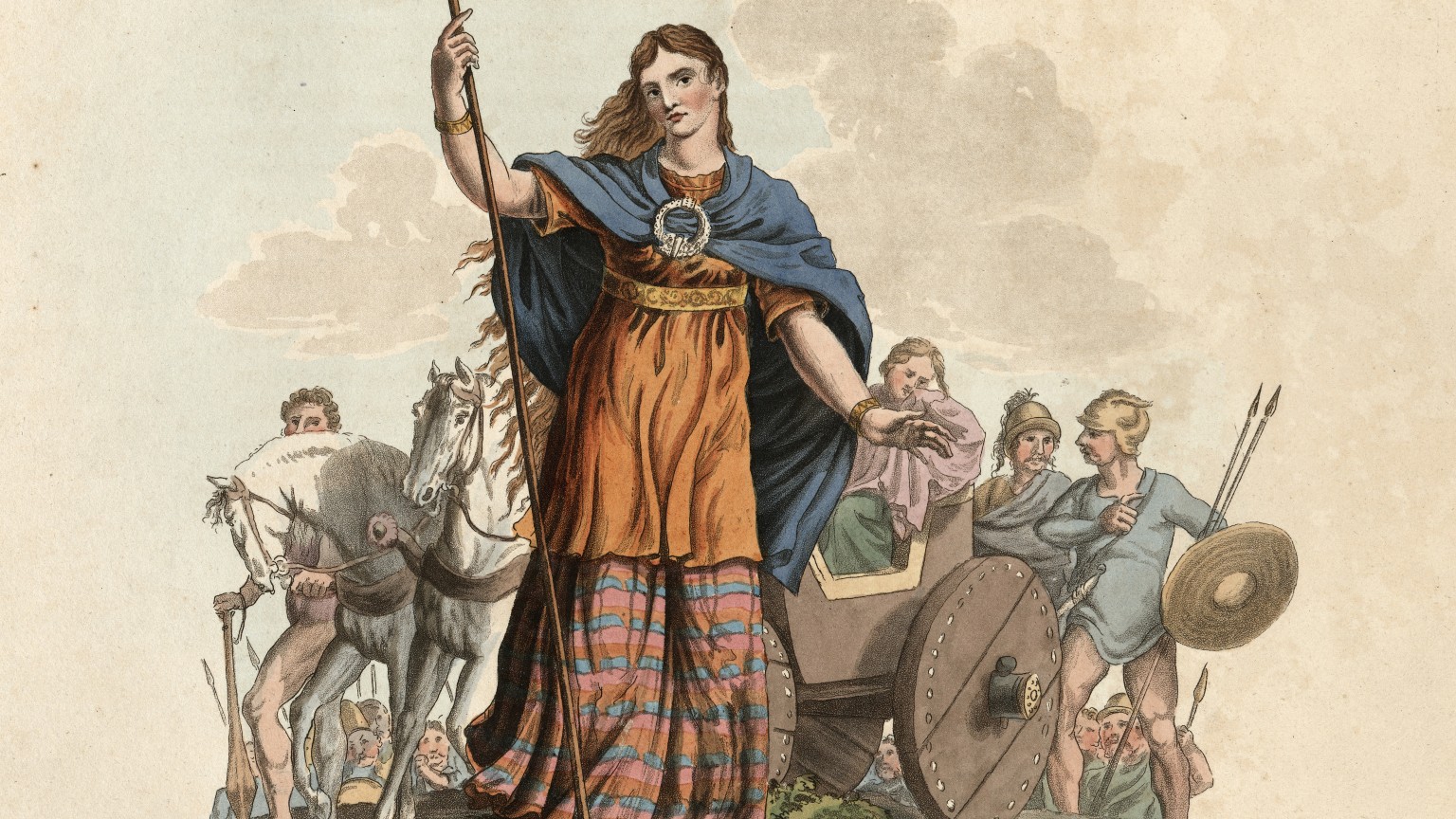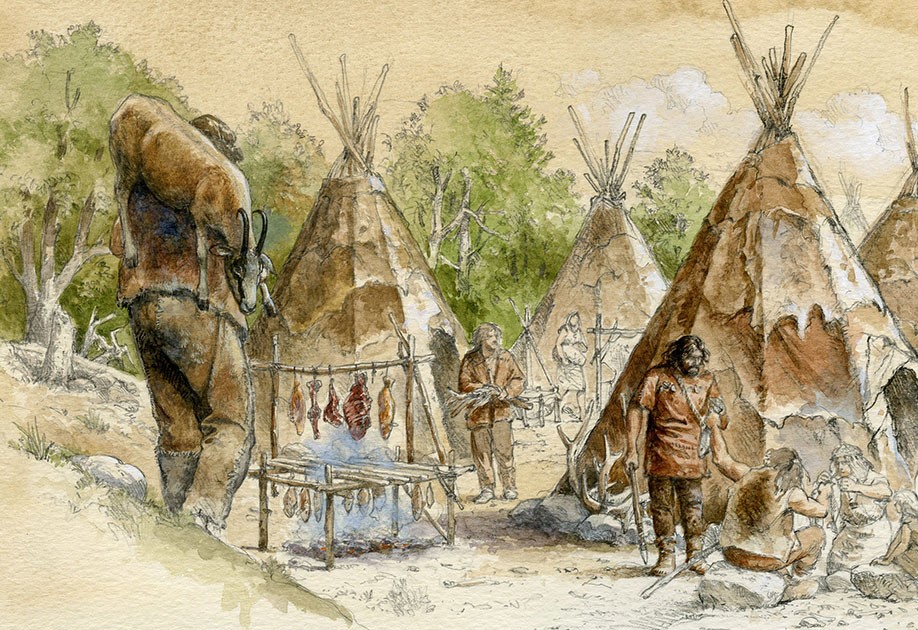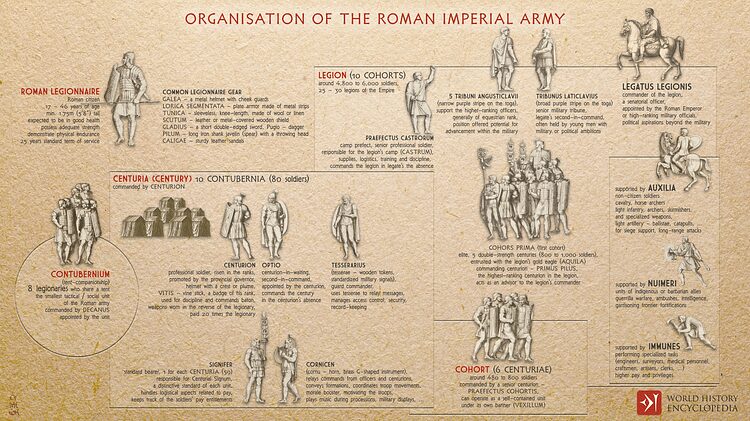When the Romans encountered the people of Northern Europe, they were often surprised by their physical appearance. Stories from ancient times describe Gauls, Germans, and Britons as particularly tall and powerful. Both men and women were noted for their impressive stature, and certain individuals, such as tribal chieftains and warriors, stood out even more.
Despite these accounts, evidence from skeletons and historical records suggests that the difference in average height between Romans and Northern Europeans was not as dramatic as once believed. Genetics, diet, and social status all played important roles in determining how tall people grew to be, both inside and outside the Roman Empire.
Key Takeaways
- Ancient writers described Northern Europeans as tall and impressive.
- Studies of skeletons show only a small height difference between Romans and their northern neighbors.
- Factors like diet, genetics, and status influenced height in both groups.
Caesar’s Attack and Initial Meetings
The Tuki Tribe’s Hill Fortress
In 57 BC, Caesar led Roman forces against the northern tribe known as the Ottawa Tuki. Their main village was set on higher ground, making it hard to reach. The Romans started to surround the area with a large wall to cut the tribe off from help or supplies.
As Roman soldiers worked, the Tuki people stood on their defenses and shouted insults. They joked about the Romans’ size, asking how such short men could possibly build such a tall tower. Ancient writers often described these northern tribes as very tall, with women almost as striking as the men. Some even mentioned that their women could be fiercer in battle.
Here is a simple comparison of reported heights:
| Group | Average Male Height |
|---|---|
| Roman Civilian | 5’4.5″ |
| Romans near coast | 5’5.5″ – 5’6.5″ |
| Northern Europeans | 5’7″ – 5’9″ |
Building Walls and Trading Insults
While the Romans began their construction, they also started building a rolling tower meant to help them storm the stronghold. This kind of building took skill and time, but it was a common part of Roman siege tactics.
The Tuki found the sight of Roman engineering curious and amusing enough to mock. They doubted that the Romans, who seemed small to them, could pull off raising such a heavy and tall structure.
Roman and northern warriors were not as different in height as some might think. Most Roman soldiers and the average northern fighter were just an inch or two apart in size. However, northern chiefs and their guards were often much bigger and stronger, and they stood in front during fights. This meant that Roman soldiers often had to face some very tall and powerful enemies right up close.
Ancient Reports of Northern Europeans
Comments on Size and Fierceness
Ancient writers often said that people from Northern Europe were taller and stronger than Romans. Women in these groups could be almost as tall as the men and were sometimes seen as even more fierce.
Romans were about 5’6″ on average for men and 5’1″ for women, based on bones found in places like Herculaneum and Pompeii. In comparison, early British males had an average height around 5’7″. Other northern groups in the Iron Age were about the same, averaging between 5’7″ and 5’9″. This is only slightly taller than the typical Roman.
People who belonged to the elite in Northern Europe were much taller. These leaders often had the money and power to eat more meat and dairy, improving their health and growth. Regular people were usually closer to the average height, but elite warriors could be much bigger and stronger.
Key Differences in Height (Ancient Estimates)
| Group | Average Male Height | Comments |
|---|---|---|
| Roman (Herculaneum) | 5’6″ (167 cm) | Access to fish improved diet |
| Roman (Italy average) | 5’4½” (164 cm) | – |
| Pre-Roman Britons | 5’7″ (170 cm) | Slightly taller |
| Iron Age Northern Europe | 5’7″-5’9″ (170-175 cm) | Elite men could be taller |
Famous Figures: Boudica and Germanic Chiefs
Some individuals really stood out because of their size and presence. Queen Boudica of Britain was described as intimidating and tall, with striking blond hair that made her seem even more impressive.
A Germanic chief who came to Rome was so tall that people were amazed to see him. Massive heights were also found in Iron Age graves. For example:
- An Iron Age chief from what is now southern Germany was over 6 feet tall and buried with gold and treasures.
- The “Marlow Warlord,” an Anglo-Saxon leader, was about 6 feet tall and very strong.
- The “Old Croghan Man” from Ireland was around 6’6″ and is known for having eaten a lot of meat, showing his high status.
The tallest warriors and leaders usually fought in the front lines and looked more imposing than the average Roman soldier. These stories about height and fierceness helped create the image of northern groups as powerful and tough opponents.

Roman Height and Skeletal Evidence
Evidence from Burial Sites near Naples
Archaeologists have studied skeletons from the areas around modern Naples, especially from towns destroyed by volcanic eruptions in 79 AD. These remains come from people of different backgrounds, found in boat shelters by the coast. The bones revealed a range of heights and conditions.
Average Heights from the Sites
| Site | Male Average | Female Average |
|---|---|---|
| Herculaneum | 5 ft 6½ in | 5 ft 1 in |
| Pompeii | 5 ft 5½ in | 5 ft 1 in |
Examples from these findings show that men in Herculaneum ranged from about 5 ft 4 in to nearly 5 ft 9 in. Women such as the so-called “Ring Lady” were close to 5 ft 2 in. Many of these people likely grew taller than other Romans due to better access to protein, especially from fish living by the sea.
Skeletal data from across central Italy points to a general male height of around 5 ft 4½ in.
Class Differences and Physical Diversity
Roman remains show a clear link between social class, health, and growth. Wealthier people often had fewer signs of hard physical labor in their bones and showed fewer effects of childhood malnutrition. Poorer individuals, in contrast, often had shorter, more curved bones due to tough working conditions and poor diets.
Height depended on both genetics and nutrition. Nobles and the rich, especially in northern Europe, were taller and better nourished—some chieftains there measured well over 6 feet. Their protein-rich diets helped them reach closer to their genetic height limits.
For most Romans, diets relied more on grains than on meat, especially for commoners. In contrast, northern elites and warriors often had more meat and dairy, leading to more robust growth. While some Roman soldiers were tall, most were close in height to the civilians of their time, usually just under 5 ft 7 in. On the battlefield, this meant Roman armies sometimes faced elite warriors from northern tribes who were both noticeably taller and stronger.
Barbarian Body Size and Eating Habits
Bone Studies in Britain and Northern Lands
Archaeologists have studied ancient skeletons from Britain and northern Europe to learn about body size. Male skeletons from pre-Roman Britain show an average height of about 170 cm (around 5’7″). This is only a little taller than men from Herculaneum, near modern Naples, where the average was about 5’6.5″. Female skeletons in both places averaged just above 5 feet tall.
Other Iron Age remains from northern Europe show males were usually in the 170–175 cm (about 5’7″–5’9″) range. Heights could vary depending on health, diet, and status.
| Location | Male Average Height | Female Average Height |
|---|---|---|
| Herculaneum, Italy | 167 cm (5’6.5″) | 155 cm (5’1″) |
| Pompeii, Italy | 166 cm (5’5.5″) | 155 cm (5’1″) |
| Pre-Roman Britain | 170 cm (5’7″) | – |
| Northern Europe (avg.) | 170–175 cm | – |

Stature of High-Ranking Warriors and Leaders
Elite figures in northern tribes stood out for their height. Several chiefs and warlords were much taller than the average person. For example, an Iron Age leader buried in southern Germany was more than 6 feet tall. An Anglo-Saxon warlord in the Marlow area also reached 6 feet. The Old Croghan man, preserved in an Irish bog, measured about 2 meters (6’6″) in height.
These tall individuals were usually found with signs of wealth, like gold items or luxury goods. Barons and warlords tended to fight in front lines, making their stature even more noticeable during battles.
Notable Elite Heights
- Iron Age chieftain (Southern Germany): over 6’0″
- Marlow Anglo-Saxon warlord: about 6’0″
- Old Croghan man (Ireland): 6’6″
Food Benefits in Northern Tribes
Diet played a big role in these differences. Northern Europeans, especially those with higher status, ate lots of meat and dairy. Their meals had more protein compared to the Roman diet, which centered on grain.
Elite individuals, like the Old Croghan man, often had stomach contents that showed a meat-rich diet. This helped them grow taller and stronger. In contrast, many Romans, especially those who were poor, often had less protein and suffered from malnutrition.
Key points about northern diets:
- More dairy and red meat than Roman diets
- More protein for growth and strength
- Elite access to the best foods
A strong diet boosted health and allowed people to reach their full genetic height, especially among leading warriors and chiefs. This was a clear advantage in both daily life and on the battlefield.
Comparing Heights: Romans and Their Northern Neighbors
Average Heights by the Numbers
When looking at actual skeleton measurements, Roman men from sites like Herculaneum and Pompeii averaged about 5 feet 6½ inches tall. Roman women averaged close to 5 feet 1 inch. These measurements are based on several groups, including wealthy citizens, workers, and even soldiers. The tallest Roman individual found was a soldier, nearing 5 feet 9 inches.
Table: Estimated Average Adult Heights
| Group | Average Male Height | Average Female Height |
|---|---|---|
| Romans (Herculaneum) | 5′ 6½” | 5′ 1″ |
| Romans (Pompeii) | 5′ 5½” | 5′ 1″ |
| Central Italy | 5′ 4½” | Not listed |
| Pre-Roman Britain | 5′ 7″ | Not listed |
| N. Europe Iron Age | 5′ 7″-5′ 9″ | Not listed |
On the other hand, people living in Iron Age northern Europe, including Britain and Germany, averaged just a little taller—often about 5 feet 7 inches for men. Some elite individuals, such as chieftains and nobles, were much taller, sometimes reaching or exceeding 6 feet.
Key Points
- Roman and Northern male averages were fairly close; northern men were only around an inch taller.
- Elite northern Europeans stood out for their greater height, sometimes reaching 6 feet or more.
- Height was linked to diet and health, with elites and coastal Romans benefiting from more protein.
Impressions on the Battlefield
Visual differences between the average Roman and the northern warriors could be small, but in combat the difference sometimes seemed larger. Elite barbarian chieftains and their chosen fighters often fought in the front ranks. These men were both tall and muscular, fed by diets rich in meat and dairy.
Roman soldiers, especially those in top units, were expected to be strong, sometimes close to 5 feet 8 inches in height, but the average was a bit less. Since elite northern warriors were the ones first seen in battle, Roman soldiers might find themselves facing enemies several inches or even a foot taller.
Battlefield Observations
- Elite northern fighters were noticeably taller than the average Roman.
- Encounters with tall northern chieftains could make “barbarian” forces seem much more imposing than they truly were on average.
- Diet and social status played key roles in determining height for both Romans and their northern opponents.
Note: All data above is based on findings from ancient remains and historical descriptions related to height and nutrition.
Influence of Genes and the Environment
How Inheritance and Diet Affect Height
Each person’s genetic code sets a range for how tall they could grow. Nutrition during childhood plays a big part in whether someone reaches their full genetic potential.
If kids do not get enough nutritious food, especially protein, or if they get sick often, they may end up shorter than their genes would allow. In places next to the sea, like Herculaneum and Pompeii, people ate lots of fresh fish. This helped both men and women reach heights above the average for Central Italy at the time.
Diet Comparison Table:
| Group | Estimated Male Average Height | Protein Source |
|---|---|---|
| Roman Central Italy | 5’4½” | Mostly grains, little meat |
| Pompeii / Herculaneum | 5’5½”–5’6½” | Fish, more protein |
| Pre-Roman Britain | 5’7″ | Dairy, red meat |
| Elite Northern Europeans | 6’0″+ | Lots of meat and dairy |
Northern Europeans often ate more dairy and red meat. This gave them more protein than most Romans, especially the poorer classes, which helped them grow taller.
Effects of Wealth and Class on Growth
Where a person stood in society also made a big difference in physical development. Wealthier Romans had access to better food and less physical stress. Their skeletons often showed fewer signs of hard manual labor and malnutrition.
In contrast, those from lower classes, like the so-called helmsmen, showed stunted growth from poor diets and tough working conditions. Elite warriors and chieftains in Northern Europe, who ate large amounts of meat, were often both taller and stronger than common people.
Key Points:
- Rich people: Had better diets and were often taller;
- Elite warriors: Stood out for both size and muscle, thanks to food and status;
- Lower classes: More likely to be shorter due to hard work and less nutritious food.
Physical size in the ancient world often reflected not just genetics, but a person’s social class and diet during childhood.
Roman Soldiers and Recruitment Standards

Roman soldiers came from many backgrounds and had a range of heights and body types. Based on skeletons found near Naples, the average male stood about 5’6½” (169 cm), while the average woman was 5’1″ (155 cm).
Some men, like a Roman soldier found in these digs, were close to 5’9″ (175 cm) and showed signs of strong muscles and old battle injuries. Access to protein, especially fish, gave people in coastal towns like Pompeii and Herculaneum a slight advantage in height.
Roman recruitment for elite legion units often required a minimum height of 5’8″. However, physical strength mattered more than actual height. The typical Roman legionary was often just slightly taller than the average Roman civilian, around 5’7″ (170 cm).
When facing off in battle, most northern warriors were only one or two inches taller than the Romans. Their leaders or elite fighters, with better nutrition and meat-heavy diets, could be much taller—sometimes over 6 feet (183 cm).
Height Comparison Table
| Group | Average Male Height | Notes |
|---|---|---|
| Roman Soldiers (Italy) | 5’6½” (169 cm) | Strong build valued in recruitment |
| Roman Civilian (Italy) | 5’4½” (164 cm) | Less protein led to shorter average |
| Northern European Warriors | 5’7″–5’9″ (170–175 cm) | Chiefs could be taller, up to 6’6” |
| Pre-Roman Britons | 5’7″ (170 cm) | Only slightly taller than average Roman |
Physical fitness and a sturdy frame were key Roman military standards. Although height was noted, a soldier’s strength and ability to carry heavy gear were considered more important. Elite units still had minimum height requirements, but it was the discipline, nutrition, and training that made Roman soldiers effective in the field.
Conclusion and Contextual Insights
Height in ancient societies is shaped by many factors, including nutrition, health, and social status. Archaeological findings from sites such as Herculaneum and Pompeii show male averages around 5’5″ to 5’6″, and female averages near 5’1″. These heights fit with what is found across Roman Central Italy.
Key Points:
- Barbarian Groups: While ancient authors described Northern Europeans as very tall, skeletal evidence suggests only a small difference from Romans. Average males from pre-Roman Britain and Iron Age northern Europe generally measured about 5’7″ to 5’9″.
- Social Class: Elite individuals, especially among the northern tribes, sometimes reached over 6 feet tall. This was likely due to better diets rich in meat and dairy.
- Nutrition: Diet played a big role. Coastal Roman townspeople often had more protein from fish, which could boost height. Northern elites had even more protein from meat.
- Battlefield Encounters: Roman soldiers, especially those in elite units, had minimum height requirements but were only slightly taller than the civilian average. The tallest opponents they faced were usually elite barbarian warriors.
| Group | Average Male Height | Notable Examples |
|---|---|---|
| Roman Central Italy | 5’4½”–5’6½” | Soldier (5’9″), Helmsman (5’4″) |
| Pre-Roman Britain | 5’7″ | |
| Iron Age Northern Europe | 5’7″–5’9″ | Chieftain (6’+), Warlord (6′), Old Croghan Man (6’6″) |
Height is not just about genetics but also reflects the environment and access to resources. Differences among ancient groups were more noticeable at the elite level than among common people. The tallest warriors, whether Roman or barbarian, stood out due to their privileged access to better food and health.
